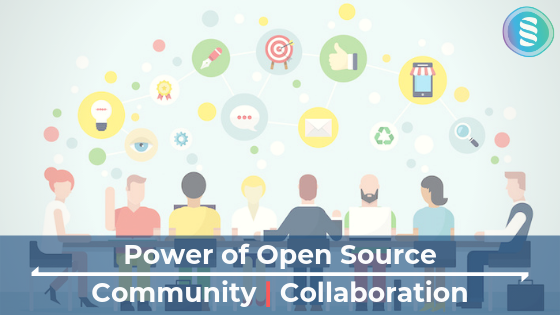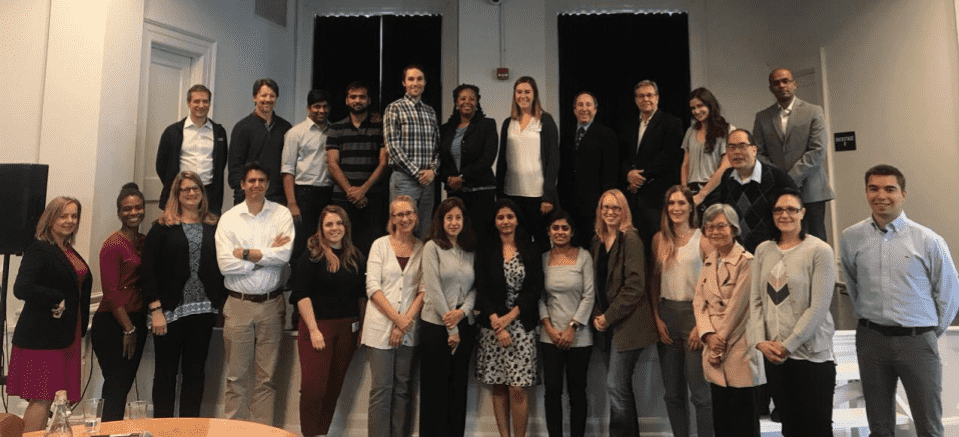Disclaimer
Krishagni is the developer of OpenSpecimen – an open-source software for managing biospecimen data used in 65+ research centers across 16+ countries. While this article promotes “open source”, it does not necessarily promote OpenSpecimen. Customers are encouraged to evaluate all options based on their requirements before deciding which software suits them the best.
Introduction to Open Source
The “open” in OpenSpecimen stands for “Open Source”. While Open Source Software (OSS) is a very popular concept in the IT world, not many non-IT savvy people understand its importance. This article aims to explain why understanding the concept of open source is important when deciding on a software for your biobank.

What is “open source” and how is it different than “closed source”?
Open source is a type of software license where the source code behind the software is free and publicly available. Conversely, “closed source” software (also known as “proprietary” software) is where the developers won’t disclose the source code to the public. Popular examples of open source products are Android, Linux, Chrome, Firefox, MySQL, WordPress, OpenClinica, i2b2, and OpenEMR. Examples of closed source products are Microsoft Windows, Oracle, OnCore, REDCap, and Epic.
A natural first question is: how do open source product companies make money based on a business model that gives away their source code? The answer is that open-source businesses charge for “professional services” like training, setup, integration, data migration, etc. Most open source products have two editions: Community and Enterprise. While the Community Edition is a fully functional product that meets all the basic needs, the Enterprise Edition will have desired premium features as well as professional support.
Why open-source matters?
Software is not good just because it is open source. Open source is one of the many aspects of a good product. Other important factors include ease of use, scalability, flexibility, popularity, support, etc. Top software companies like Microsoft, Google, and Apple heavily invest in, use, develop and promote open source products.
Not “locked” to one developer
One of the most important concepts behind open-source software is that consumers of the product are not bound by a single development entity. In open-source software, consumers are not at the “mercy” of the application developers since the source code is public.
Consider these scenarios:
- The developer goes out of business or decides to stop working on the product.
- Your funding dries up and you don’t have the money to pay annual license fees every year.
- The developer decides to take the product in a direction that you and/or others in the community don’t think is a good fit
There are many options with software that is developed in a manner consistent with open-source principles. For example, another company can take the product forward or the adopter community can get together and form a consortium. With proprietary software, however, you do not have that choice as consumers are “locked-in” to the developer of the product.
Security and code quality
How would one know that the product is well-built and secure? In open-source, the source code is public and therefore audit-able. In fact, since the code is publicly available it forces the developers to take extra precautions to ensure good quality code. If desired, one could hire a security expert to review the source code to confirm that the product is indeed well developed and secure.
Community contribution and collaboration
Typically, open-source projects have a vibrant community and promote collaboration. They have open forums, webinars, monthly calls and annual meetings. OpenSpecimen has a rich history of customers contributing to the development of new features. For example, a feature first funded by the University of Leicester is further enhanced by Stanford University and later further improved by SAHMRI. This ripple effect contributes to a feature-rich and stable end product. The entire community, whether a paying customer or not, benefits from this activity.
 Open Source History of OpenSpecimen
Open Source History of OpenSpecimen
The history of OpenSpecimen is a classic example of why open source matters. OpenSpecimen started in 2004 as “caTissue” with funding from the National Cancer Institute (NCI). However, in 2009, NCI stopped the funding for the development of caTissue. By then, there were many centers that had already adopted caTissue in the USA, Australia, UK, and Singapore but were now stuck with a product that had no future development path. At Krishagni, founded by three caTissue developers, it made a perfect business sense to adopt caTissue and continue development and support. This was possible only because NCI had released caTissue under an open-source software license. Over the next few years, Krishagni rebranded caTissue as OpenSpecimen and rewrote the source code to modernize its architecture. Importantly, Krishagni retained the open source nature of OpenSpecimen – even though it was not mandatory to do so.
Summary
In the academic and non-profit world, collaboration and development of a community are important. Openness and transparency with customers should be the preferred environment for any company. OpenSpecimen is used in many centers today without any compensation to Krishagni. This includes not only centers from low-income countries like India, Egypt, and Nigeria but also leading centers like Oxford University and the University of Basel. Krishagni fully supports the entire OpenSpecimen ecosystem and views successful implementations at institutions of any size as a win for the entire biobanking community.
Customer Statements
Washington University – St.Louis, USA
“We fundamentally believe in using the best informatics tool to meet local requirements and have a long history of using proprietary, open-source and custom software to fill those needs. While each application, support mechanism, and vendor is unique with regard to licensing and total cost for using their application, we do believe that open-source tools, vendors and the community supporting the tools generate strong symbiotic relationships. Since OpenSpecimen is open-source, we feel that there is flexibility for us to engage resources, either internal or external, to meet our needs.”
Dave Mulvihill, Director of Informatics, Siteman Cancer Center
Center for Bioethics and Research (CBR) – Nigeria
“Open-source nature of OpenSpecimen has helped us tremendously in achieving the goal of a
software-driven biobank for our various research projects because we are in a low resource
environment and cannot afford many paid services and software.
Open-source software levels the playing field between research centers and institutions in
Africa and those in high resource environments to a certain degree. This enables African
research institutions to stretch their resources and participate in the latest health research
projects while embracing new technology in a way that is forward-thinking and compatible with
legacy solutions.”
John Hopkins University- Baltimore, Maryland, USA
“At JHU, we view the open source nature of OpenSpecimen as a key part of the application’s appeal. It promotes a strong user community that allows development to be driven by the needs of research, not software developers. Its openness allows us to really “see” what we’re getting and allows our technical team to have a fuller understanding that helps us support our researchers.
Combined with OpenSpecimen’s plugin architecture, we have the flexibility to customize the application to our needs which will become increasingly important as we continue to roll out across our institution. While we have been very satisfied with Krishagni’s support and direction, it is also good to know that we are not beholden to that, because we ultimately have ownership of OpenSpecimen at JHU. Lastly, and perhaps most importantly, the availability of good biobanking software to everyone, regardless of that institution’s means, will make research and collaboration stronger for all of us.”
Written by: Srikanth Adiga, CEO, Krishagni
For more details, email [email protected]
